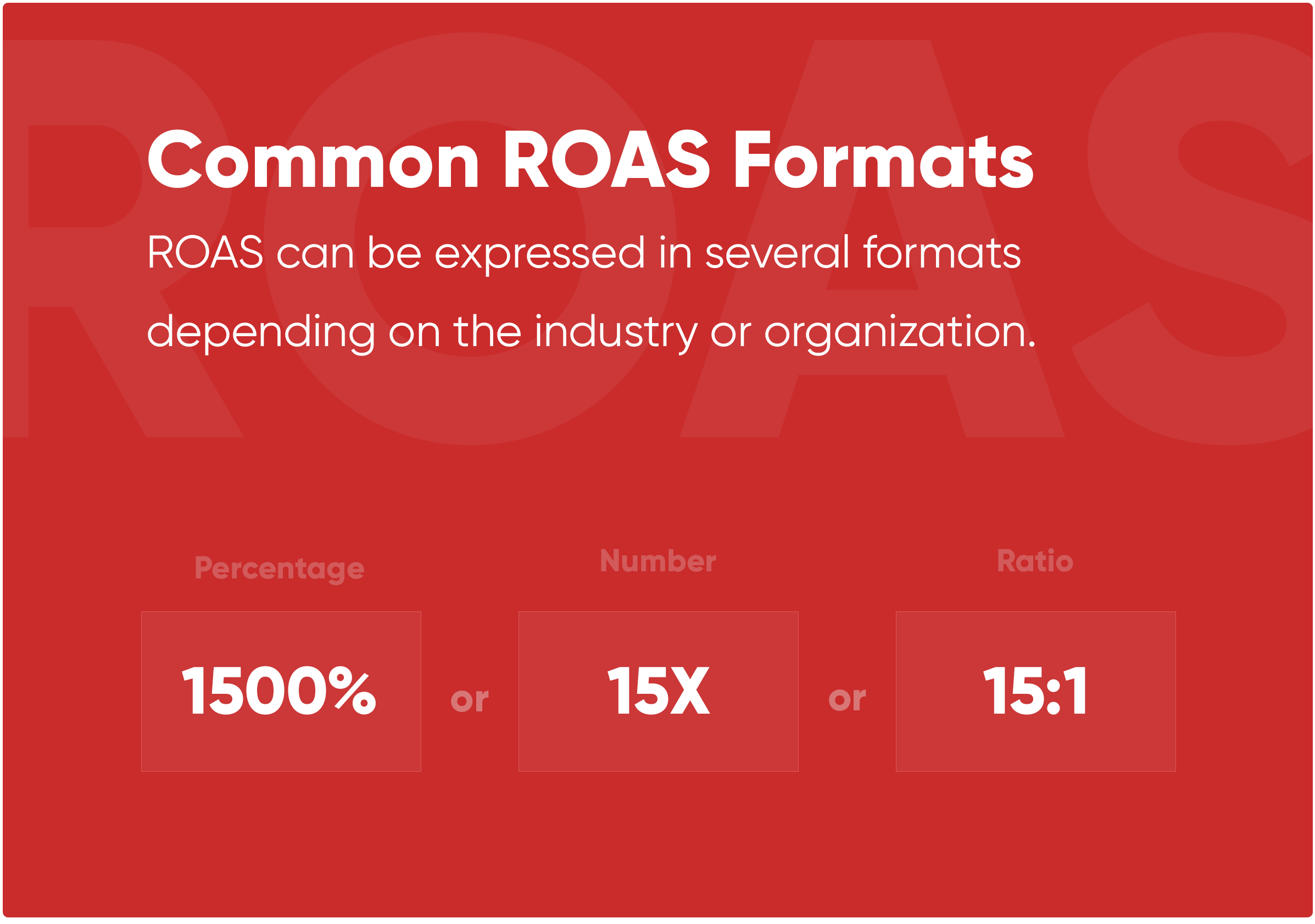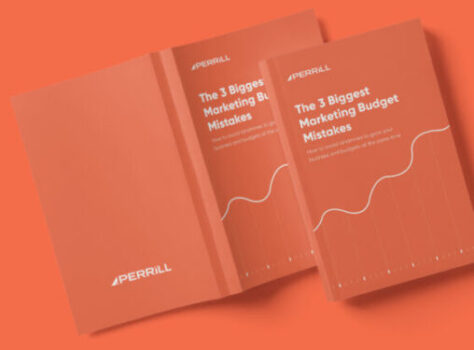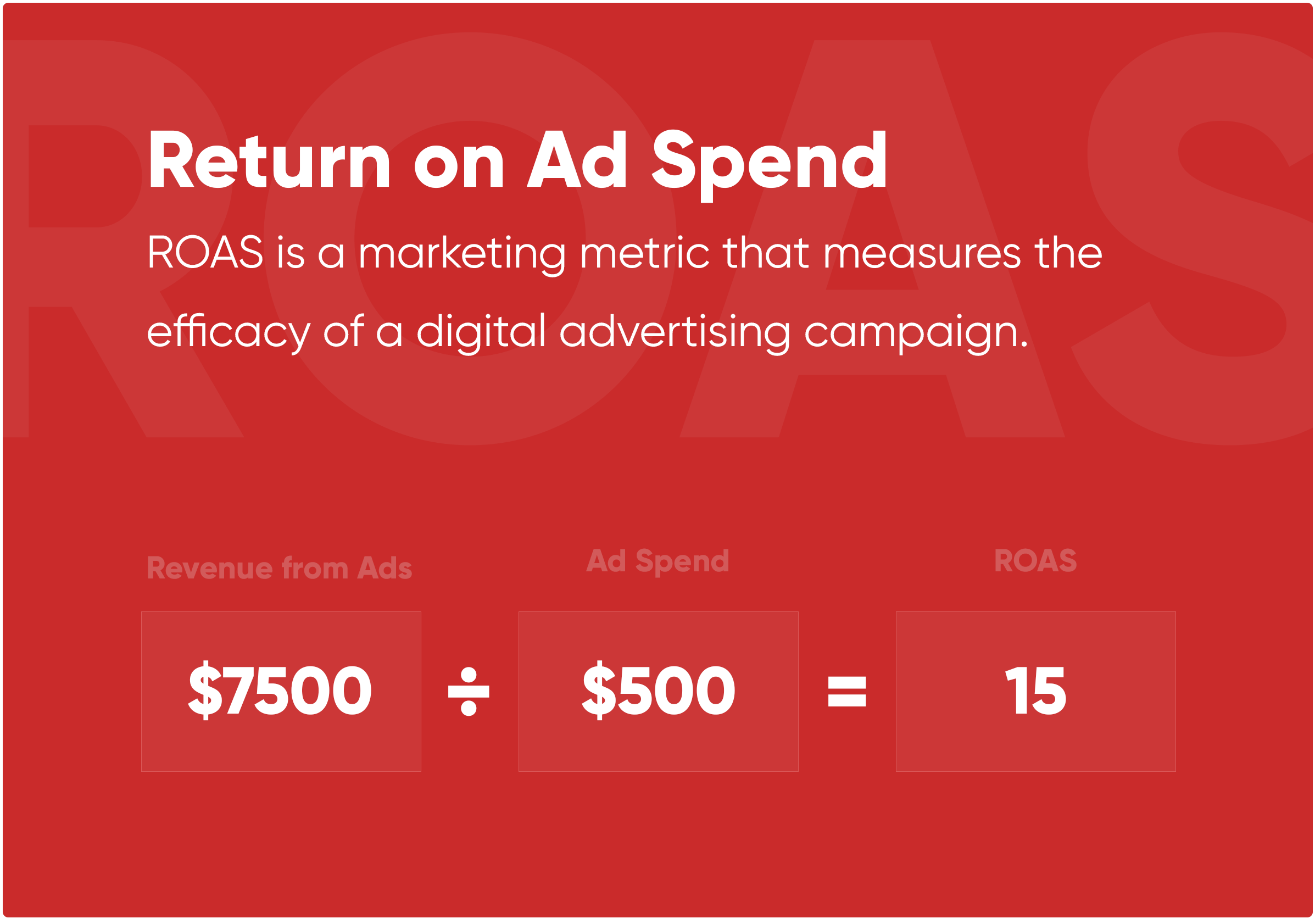
What is ROAS? How to calculate return on ad spend

In digital marketing, data is everything. It helps validate performance (or a lack thereof) and informs decision-making to continually optimize our campaigns and the ways we reach our audiences.
We hear all the time about the importance of traffic and conversions, both of which are often tracked and used to speak to the overall health and performance of a website.
But another lesser-known figure is just as important – return on advertising spend (ROAS).
In digital advertising, measuring success is all about money. That is, how much revenue did a campaign generate and how effectively is it contributing to the profitability of our business?
This is what makes ROAS such an important metric to track and utilize alongside the rest. In this post, we’ll break down what ROAS is, how it’s calculated, and why it’s so essential in optimizing your marketing strategy as a whole.
What is ROAS (return on ad spend)?
ROAS is a metric used to determine the success of a digital advertising campaign. It does this by showing how much revenue is generated for every dollar spent on an ad account, campaign, or group.
ROAS is one of the most important metrics in helping online advertisers understand what they’re getting out of their investment – and where they could be getting more.
How do you calculate ROAS?
The equation for calculating ROAS is fairly simple: Revenue generated by advertising / dollars spent on advertising.
This equation is somewhat of an oversimplification of the greater picture, however, and can be rather limiting when taken at face value. This is because measuring revenue and cost is not always a straightforward process.
Calculating the value of product purchases, for example, is easy, as they are assigned a specific worth and attributed to your business in explicit quantities. But if one of your main marketing and advertising goals is to generate leads, you’ll also need to determine the value of a lead in order to accurately track your ROAS.
Similarly, cost also has several levels to consider. Apart from the cost of running an ad, there’s also the possibility of fees paid to agency partners or vendors who help create the ad, personnel and salary costs, money spent on clicks and impressions, and more.
All factors of both sides of the equation need to be taken into account to properly calculate ROAS.
Here’s an example of how to calculate ROAS
Calculating ROAS is pretty easy, as long as you know a few important data points. Say a B2B eCommerce website sells products online directly to its customers while also aiming to generate leads from businesses that may lead to longer-term relationships.
The firm runs an ad campaign that spends $500 on clicks on a PPC basis. The campaign generates six new leads at $1,000 per lead in addition to selling 15 products at $100 per product.
Using the standard ROAS equation, it could be determined that the $7,500 in revenue against the $500 cost in clicks results in a ROAS of 15:1.
However, if you take into account the full picture and include the fact that $1,300 was spent on account management and $700 was spent on ad creation to an agency partner, the total cost of the campaign comes to $2,500 – resulting in a true return of 3:1 rather than 15:1 (could also be expressed as 3x, 300%, or simply 3).

This is just one example, as every campaign will have its own channels of revenue and cost depending on the unique circumstances of the business.
Keeping close tabs on your ROAS can help optimize future campaigns and budgeting. Today, there are several platforms such as Google Ads that make it relatively easy to track ROAS on different levels to quickly inform strategic changes.
Why is ROAS so important?
As with most data in digital marketing, ROAS help businesses evaluate which strategies are working and which can be optimized to improve future returns. ROAS shows how well digital advertising is either contributing to or hurting the bottom line of your marketing budget and net income as a business.
What makes ROAS so invaluable is its difference in nature when compared to other common marketing metrics. While traffic and conversion data can be useful in assessing several key performance trends, they don’t speak directly to the profitability of your business. This is because most visits and conversions are worth more or less than others depending on the specific action taken.
ROAS gets right to the point. It can be looked at to determine everything from an entire account’s performance to how well a certain ad is resonating with a specific audience. If you can compare revenue against cost, you can calculate ROAS.
What is a good ROAS?
To use ROAS to help make decisions, you first have to establish what an acceptable ROAS is. Is 3:1 good enough? Is an ROAS of 2:1 too low? Should you be shooting for the stars at 10:1 or higher? The target benchmark your business strives for will depend largely on your own budget and profit margins – which should both be clearly defined before outlining your advertising strategy.
For the sake of industry standards, an ROAS of 4:1 is a fairly common target. However, most eCommerce sellers may need a higher ratio to stay profitable given their already low profit margins, while others in higher-margin industries can get by with a lower ROAS.
Take into account your margins and budget prior to advertising and use them to help determine what your target ROAS should be.

How to improve your ROAS
Now that we understand how ROAS is calculated and its importance in optimizing your advertising strategy, here are a few ways you can go about improving your ratio.
- Launch a branded campaign – Branded campaigns target your business’s name and typically have high conversion rates because users searching your name are likely already interested in contacting you or making a purchase.
- Use negative keywords – Negative keywords prevent your ads from appearing in searches for keywords that may be related to your target keywords but not to your business’s offerings or campaign goals.
- Use geo-targeting – Especially valuable for brick-and-mortar businesses and for those with a limited shipping area, narrowing your targeting based on geographic location ensures you’re not wasting spend on users who aren’t able to receive your products or services.
- Ensure your site is mobile-friendly – An increasing percentage of web traffic comes from mobile devices, and if users click on your ad and land on your site only to experience friction and poor usability, they’re going to leave.
- Adjust bids based on time and location – If you know your ads aren’t going to perform as well on the weekends or in the middle of the night, you’ll want to reduce bids during those times to save on ad spend. Similarly, if you’re targeting an almost entirely urban audience, you should reduce bids in rural areas.
- Optimize your landing pages – Landing pages are where users are sent when they click on your ads, and they must be optimized to ensure they load quickly, are easy to use, and that they direct users down a clear conversion path.
- Test, test, test – As with all marketing strategies, ad performance can always be improved. Experimenting with different images, copy, timing, locations, CTAs, offers, and more – and then analyzing the test results – will help to continually improve your ads’ efficacy and ROAS.
Maximize your ROAS with the digital experts at Perrill
The Perrill team is comprised of collaborative experts in the latest and most proven trends in digital advertising, SEO, content marketing, and much more. In more than 25 years as the original Minneapolis digital agency, we have helped countless local and national businesses establish themselves as online industry leaders.
Contact us today to learn more about how to craft and execute a strategy designed to get the most out of your ad spend.







